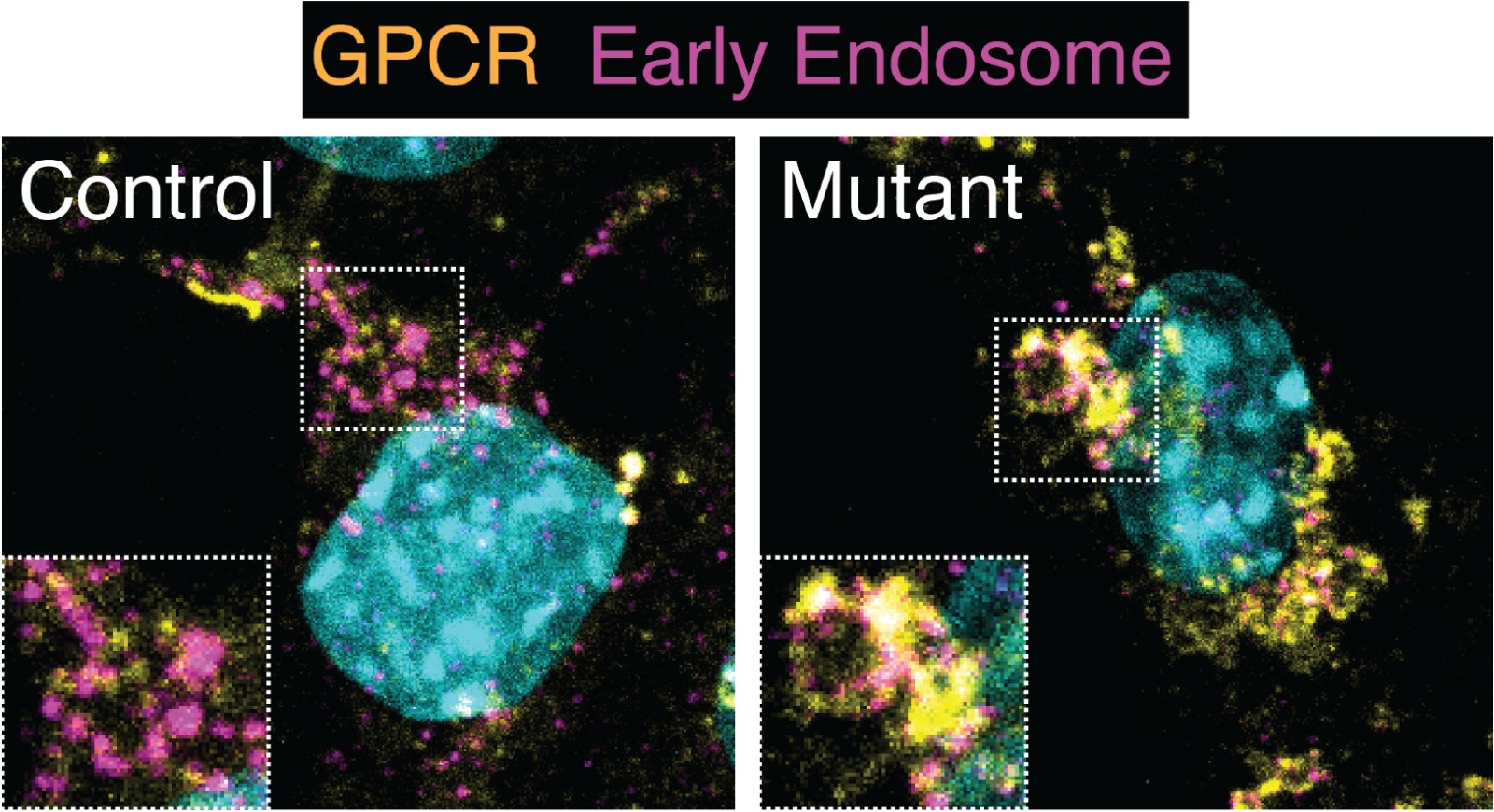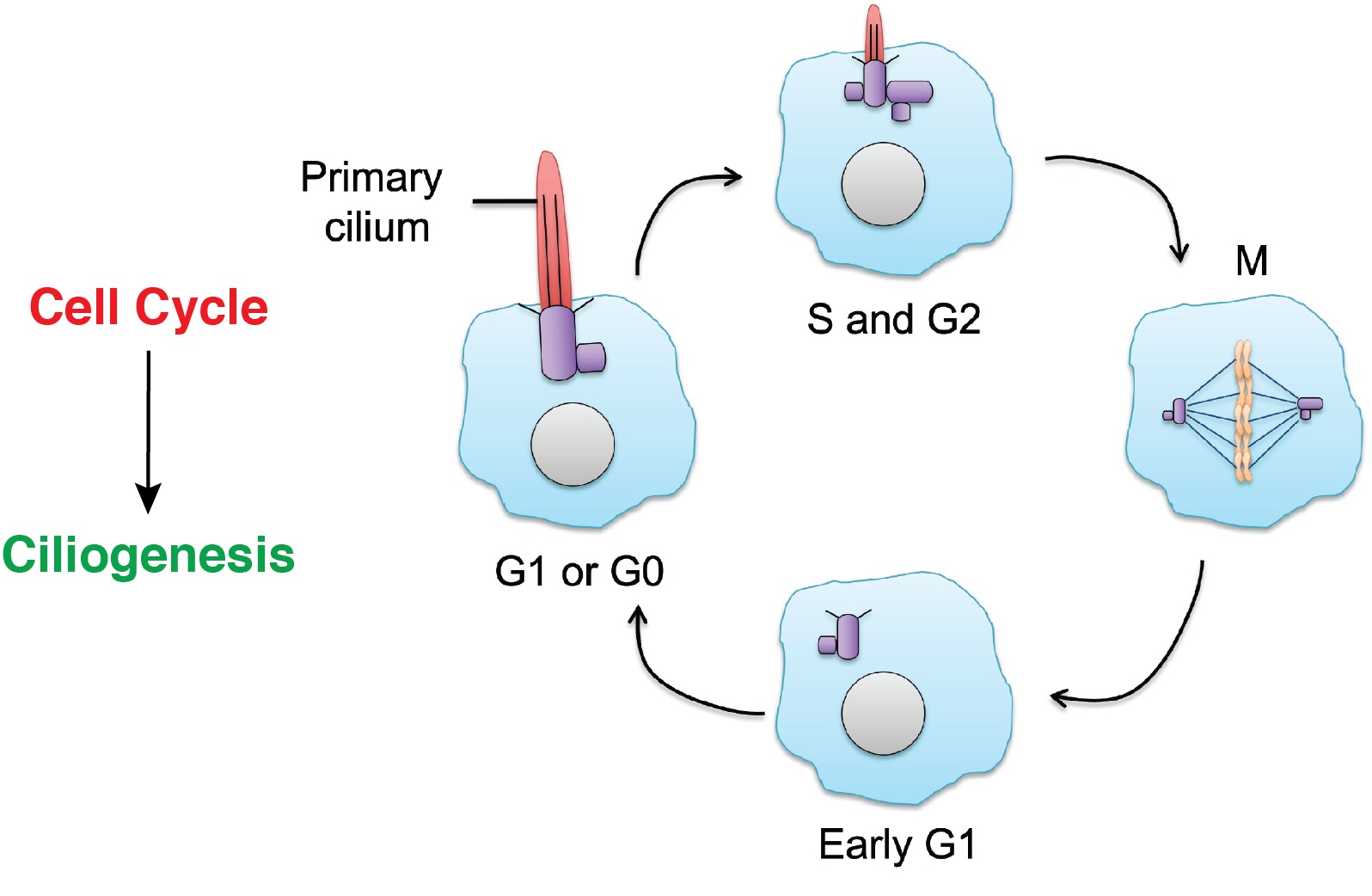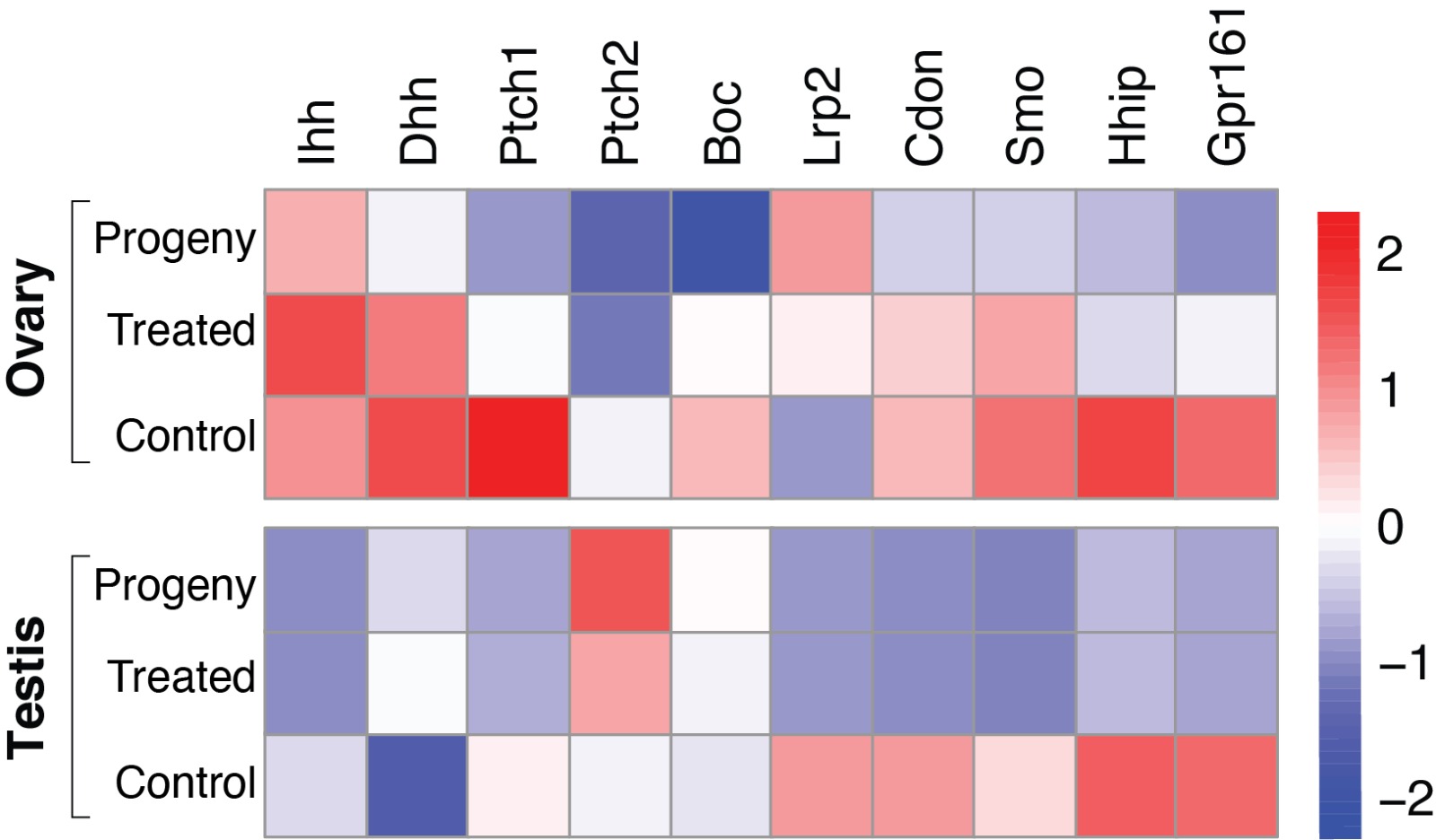


Primary cilia host a range of G-protein coupled receptors (GPCRs); the dynamic concentration of these receptors in the cilia determines the signalling output. These GPCRs are coupled to Gαs or Gαi, regulating the activation of adenylyl cyclases (AC) to maintain ciliary levels of cAMP. Signal-dependent redistribution of ciliary GPCRs is the key to maintaining correct cAMP levels. We study key trafficking pathways that control the signal-dependent dynamic redistribution of these GPCRs in and out of cilia. We have demonstrated that ciliary GPCRs such as Somatostatin Receptor 3 and SMO are ubiquitinated with Lysine-63linked polyubiquitin chains (UbK63) before the retrieval machinery removes them. We aim to understand how several post-translational modifications of activated GPCRs and the transport machinery shape ciliary trafficking.
Cilia assembly and disassembly/resorption are intimately linked to cell cycle progression. When cells exit the cell cycle and enter quiescence or G0, cilia are assembled, whereas cell cycle re-entry triggers cilium disassembly. The spatiotemporal regulation of mitogen stimulation, cell cycle re-entry, and cilia disassembly must be established. Cells get rid of cilia via resorption, disassembly, whole cilium shedding or via shedding of vesicles; however, the specific molecular mechanism that triggers cilia disassembly remains elusive. We use Chlamydomonas reinhardtii, a freshwater alga, to study cilia dynamics. The presence or absence of cilia is linked to tumor formation and cancer progression. However, how the loss of cilia is associated with cancer progression is poorly characterized. We mine patient omics data from open-access cancer patient databases such as cBioPortal to identify novel cancer-associated ciliary genes and employ proteomics, cell and molecular biology and microscopy methods to characterize them.


Ciliopathies such as Bardet-Biedl syndrome and Alstrom syndrome present with pediatric obesity with an increased risk for type 2 diabetes. Ciliary GPCRs modulate cAMP signalling to govern glucose metabolism at pancreatic islets by controlling insulin and glucagon secretion. We will perform systematic studies employing molecular, proteomic, and biochemical approaches to dissect the molecular mechanism of how cAMP signalling and dynamic redistribution of ciliary proteins govern insulin and glucagon secretion. In addition, we are interested in how genetic and non-genetic factors, such as exposure to heavy metals, chemicals, and pesticides, could disrupt the ciliary signalling pathways associated with human reproductive health. I hope to gain actionable insights into the pathomechanisms of obesity and diabetes and provide therapeutic strategies beyond the current status quo of palliative care.